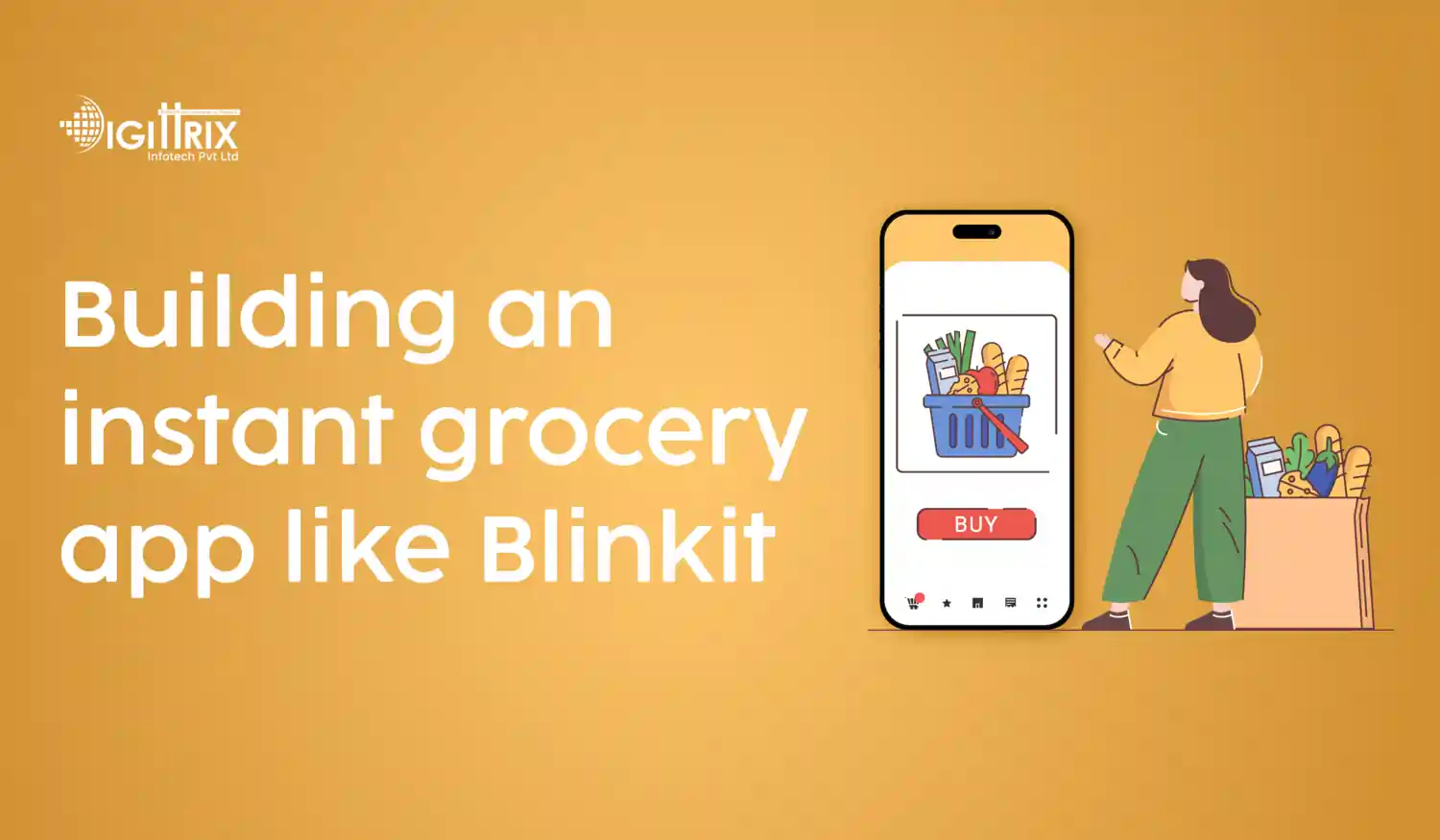Are you looking to develop an instant grocery app like Blinkit in 2025? This guide is all about essential features, tech, and tactics to develop a speedy and user-friendly app. Discover how to meet customer demands and stay ahead in this grocery delivery race!
Highlights
With Over 14 years of Experience in the IT Field, Helping Companies Optimise there Products for more Conversions

Grocery delivery is a popular service, and applications providing instant grocery delivery have emerged as today’s favourite topic. The examples of Blinkit, Instacart, and others prove that people do need a fast, convenient, and efficient grocery delivery service. In this article, we are going to reveal the prospect of starting an Instant Grocery App like Blinkit in the year 2025, features, cost, and revenue model.
Instant grocery services have been successful because they meet a need in the grocery supply. Due to the demanding schedules that are being practised today, people are searching for ways to reduce the time spent running around. A Grocery App Development solution solves the problem of shopping for groceries from the comfort of mobile devices, offering delivery right to their doorstep.
Developing an Instant Delivery App like Blinkit can provide numerous benefits:
Market research is crucial when considering the development of an Instant Grocery App and requires the identification of potential competitors and the purchasing customer base. Some key aspects to consider include:
When conducting market analysis, you can develop an effective strategy for your same-day delivery grocery app for your target market.
Looking to optimize your retail space? Check Digittrix's expert tips for better management!
When developing an Instant Grocery App, you have two main options: native and cross-platform development. Native apps are developed for a single platform, like iOS or Android, while cross-platform applications are built to be used on multiple platforms.
Consider some of these tips to choose the most suitable platform for your grocery mobile app development, based on your budget, target market, and development time.
The user interface of an Instant Delivery App like Blinkit should be fluid, easy to navigate, and simple to use. The app should be well-categorized, offer an efficient search option, and include a shopping cart. It should also feature meaningful images and an interrelated layout and design for different pages.
Some features to include in your app's user interface are:
To complement our recommendations, it’s essential to test your grocery delivery app development to ensure there are no bugs or issues. Testing should include:
Once the development of your app is complete and all tests have been passed, it is ready to be listed on the App Store and Google Play Store.
Marketing is essential to promote your newly developed and deployed grocery delivery app development. Some marketing strategies to consider include:
Using these marketing techniques will help you increase your customer base and attract more users to your grocery mobile app development.
Just like any mobile application, the Instant Grocery App must have a viable and sustainable profit-generating plan. Some potential revenue streams include:
Choosing the right revenue model for your same-day delivery grocery app will make it self-sustaining and profitable in the future.
Building an Instant Grocery App similar to Blinkit in 2025 is both viable and possible. By following the steps outlined in this article, you can create an app that addresses the needs and preferences of your target audience while staying competitive in the grocery market. The increased focus on user experience, marketing, and how the app can generate revenue will help establish a successful grocery delivery app development company.
An instant grocery app is a game-changer for the modern shopping experience, providing fast deliveries, seamless user interaction, and real-time tracking. If you're planning to develop an app like Blinkit, it should feature essential functionalities such as an intuitive interface for easy browsing, a secure payment gateway for smooth transactions, and a reliable delivery management system for timely and efficient deliveries.
At Digittrix, we specialize in developing custom grocery apps tailored to your specific needs. With over 14 years of experience and a team of skilled developers, we can bring your vision to life.
Ready to launch your instant grocery app? Schedule a consultation with us today by calling +91 8727000867 or emailing us at digittrix@gmail.com. Let's create your future-proof app!

Do you need help in Mobile App development?




Join over 1500+ businesses we've already helped!
An Instant Grocery App allows users to order groceries online and receive deliveries within a short time, often on the same day. Apps like Blinkit provide fast, convenient grocery shopping from the comfort of home.
The cost of developing a grocery delivery app depends on factors like features, platform choice, design, and complexity. On average, it can range from $10,000 to $50,000 or more.
Key features include product search, a shopping cart, multiple payment options, order tracking, user profiles, and personalized recommendations, ensuring a smooth user experience.
Revenue models include commission-based systems, subscription plans, in-app advertising, and premium features like early access to deals or discounted delivery services.

©2025Digittrix Infotech Private Limited , All rights reserved.